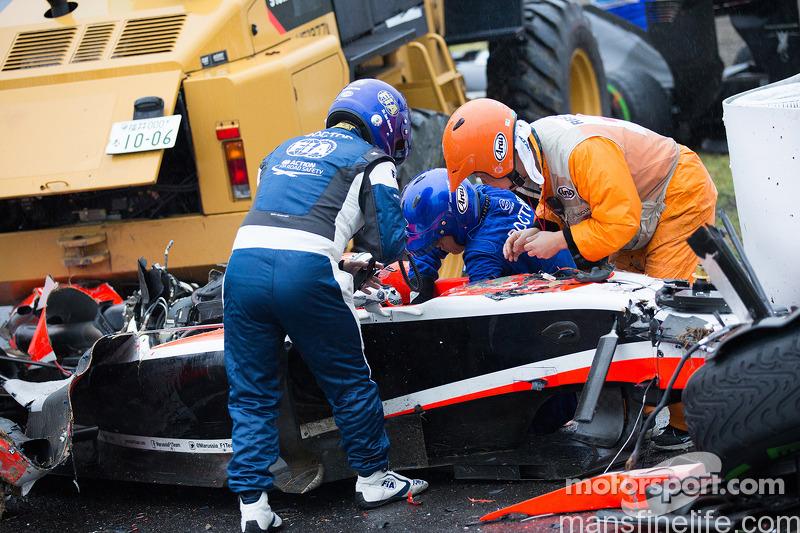Formula 1 driver Jules Bianchi has passed away at the age of 25. Bianchi succumbed to the severe head injury he received last October at Suzuka in the waning stages of the Japanese Grand Prix, when his Marussia collided with a recovery vehicle on the track under rainy Yellow Flag conditions. Due to the low profile of F1 cars, his head struck the lower edge of the crane at a high rate of speed dealing him the diffuse axonal injury from which he would never recover. Jules was a highly regarded, up-and-coming pilot with connections to Ferrari and after scoring his and Marussia’s first-ever Championship points at Monaco last year it seemed as if the sky was the limit for his career in motorsport. We send our condolences to his family, friends and colleagues and we mourn his premature passing. It seems profoundly unfair that someone so young and talented should have his life cut short in this fashion. But his chosen vocation was a dangerous one. Despite the fact that there had been no fatalities in F1 in 20 years, we can never loose sight of the fact that these drivers put their lives on the line every time they step into the cockpit despite how “easy” it looks on TV.
It has to be said that the FIA’s report on the incident did not exactly cover the organization in glory. It firmly laid the blame on Jules for not lifting enough with the yellow flags waving, although there were conflicting reports as to where exactly a driver might be able to see the yellows and how much he was required to lift. Continue reading


